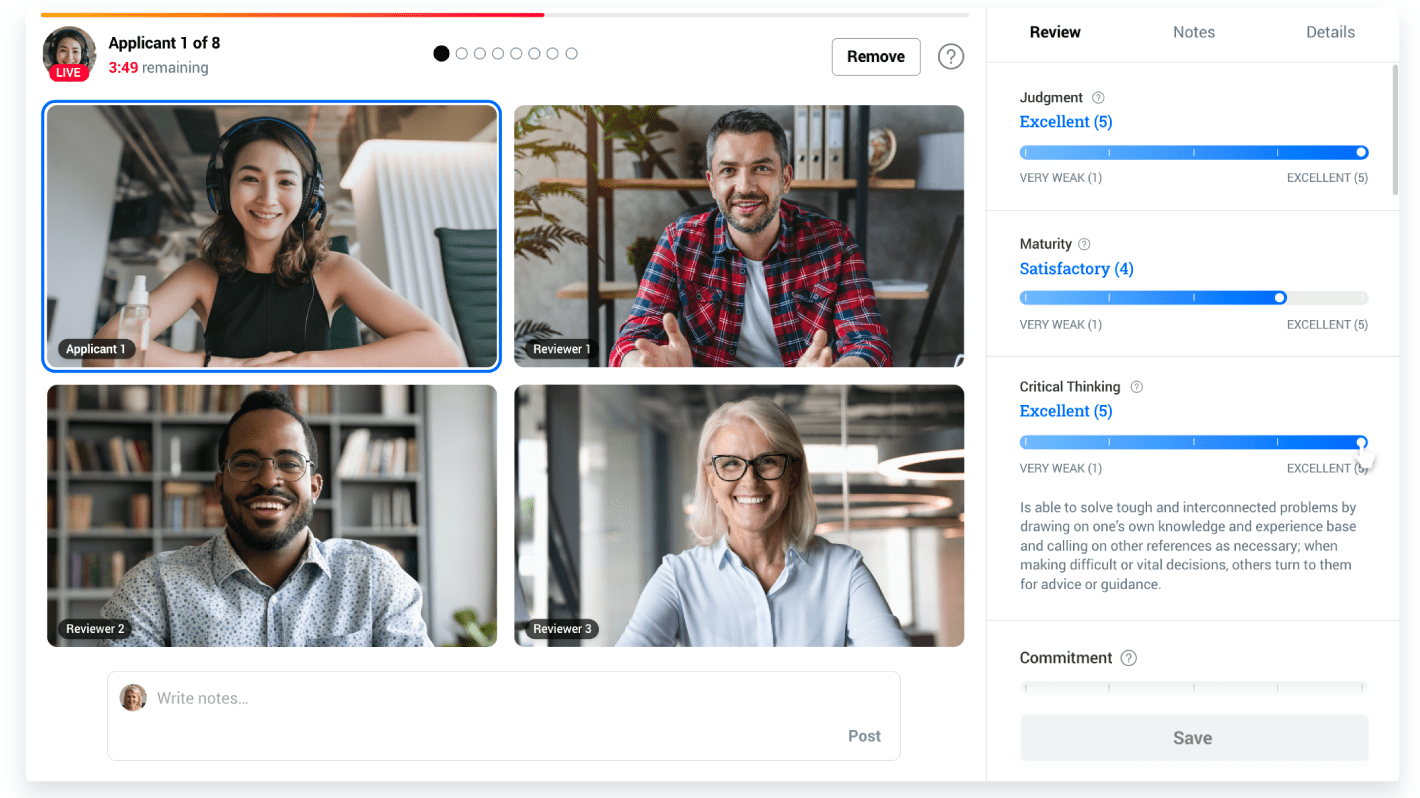College recruitment videos are one of the most powerful tools admissions teams have to connect with prospective students.
But with applicants inundated with video content online, colleges are going to need to get creative with marketing and recruitment campaigns this fall.
Looking back at some of the Kira Award for Best Higher Education Recruitment Videos, the best videos won because of good storytelling, authenticity, and emotional appeal.
Today, we’ll tap into the best college videos from the 2010s and look at what we can learn from the higher education recruitment videos of the decade.
Four tips to making great college recruitment videos
1. Know your audience
To start, we’ll go back to 2015’s Kira Award winner: University of Moncton.
When you try to appeal to everyone, you appeal to no one.
Understanding exactly who your audience is, and what they’re going through as they decide on their post-secondary plans amidst a pandemic, will be key to making an effective video.
University of Moncton designed this campaign from the ground up with students in mind and didn’t try to water down their message to make it work for every other stakeholder.
“Everybody has a great program, everybody has scholarships, if you keep saying that you’re not sticking out. And we wanted to stick out,” said Denis Boucher, University of Moncton’s Director of Recruitment in an interview with Kira.
The University of Moncton saw a 22% increase in applications following this campaign — a big victory for a small university.
Do: Talk to your students. Interview five of your applicants and students virtually to really get a clearer picture of what’s on their mind right now and what they want to hear from the university. Read forums like Reddit and social media channels. Your students are talking. Listening will help you make a great campaign.
Don’t: Make assumptions. Survey data and articles online are great, but they aren’t specific enough to your student body. This is the time to ask questions, test your hypotheses, and try something different.
2. Write from the heart
When thinking about video, it’s important to not let the script fall from top of mind. Between YouTubers and TikTokers continually making “off-the-cuff” creations that go viral, it can be tempting to “wing” your video script.
But having a script, and a story, will be critical to sending the right message.
No video shows us that more than 2018’s award-winning video from London Metropolitan University.
““The script is the heart of our video; it was written by someone who holds the University – and its mission – close to her heart,” explained the University’s Director of Marketing, Hasnai Benkacem in an interview with Kira.
For London Met, Benkacem said her team wanted to produce something that would be “a breath of fresh air in what is often quite a repetitive story.”
After we’ve heard “unpredictable, unprecedented, and unusual” uttered endlessly throughout the pandemic, you are faced with a similar challenge: How to stand out.
Getting to the core of your program’s mission and unique value propositions can help you cut through the noise this fall.
Do: Come back to what makes you special. Take a few steps back and look at why your school is special. What are your values? Your unique offerings? Who are the alumni that set the stage for your future students? Think about what it means to be in your community and build that into your video script.
Do: Be careful with your narrator selection. All of the work you do on writing a great script will be lost if the person saying the words can’t deliver it with passion and meaning. We aren’t all going to be able to perform on the same level as Andre, from London Met’s video, but we can all do our best to speak from the heart about the school we know and love.
3. Think differently about college recruitment video formats
Trying to film a compelling video in the pandemic isn’t easy. Between distancing limitations, closed campus buildings, and having to partner with external organizations for cast and crew, it can be a lot to take on.
The result has been a lot of schools publishing “talking head” webcam videos.
While better than nothing, it’s not the most compelling format.
Consider ways to use video that don’t require real-life participation
If you have existing B-roll or can create some, consider combining campus footage with updated messaging relevant to the times.
In 2018, the University of Birmingham displayed how much can be done by combining video footage with sound-editing and the animation of written words.
Although created pre-pandemic, you’ll find that actually only a few seconds of this 1:54 long video even shows more than two people in the same place.
University of Phoenix’s “We Can Do IT” proved that animated videos can be just as powerful as showing real people on campus.
https://youtu.be/2TTd2FmYr0g
In this tear-jerker, a working mother reinvents her career with an online IT degree from the University of Phoenix and is able to find success that supports her family.
Especially given the economic changes happening globally due to the virus, this video remains a powerful and timely inspiration. Read more about the University of Phoenix campaign in AdWeek.
Do: Think outside the box with video. Don’t feel limited to what you can do with your webcam. Tap into your student body. Talk to your colleagues. See if there’s something creative you can do that isn’t a “talking head on camera.”
Don’t: Ignore the pandemic. At this point, we can’t pretend student recruitment won’t look a little different this year. Setting a campus expectation through videos of students hugging, studying in close proximity, and eating in crowded food courts isn’t going to land this year.
Consider how you can use footage to craft a different message that articulates to students that you understand they’re worried about not getting the campus experience they expect.
4. Focus on authenticity instead of elaborate production in college recruitment videos
Despite being one of the most notable institutions in the world, Oxford’s 2017 award-winner did not play up their big brand. Instead, the team used video as a way to make the institution more relatable to international students.
“We do try to have recruitment products, which are informative and represent the excellence of the University, but also put a friendlier, approachable face on our illustrious reputation. And humour is the best way to reduce the formality of our relationship with prospective students,” said Kathryn Whittington, Head of Graduate Recruitment and Communications for Graduate Admissions in an interview with Kira.
This experience is overwhelming and scary for students.
Many are frustrated about the uncertainty and the risk that they won’t get the ‘college experience’ they dreamed of. As they watch this year’s cohort wade into the unknown, next year’s applicants may already be putting up walls to keep them from getting too excited about any higher education experience.
Showing humanity, empathy, and friendliness to students through videos can help connect with students on a deeper level.
For Oxford, inserting jokes, awkward and relatable moments, reminded students that the university is full of a community of people just like them.
Do: Be a human. The most pandemic-proof recommendation of all is making your institution approachable to the students you’re hoping to attract. Even Oxford, the most illustrious of academic brands, has a target audience that it wants to appeal to in a personable and friendly way. Keep your audience in mind and talk directly to them. Human to human.
Don’t: Just jump onto the latest TikTok trend. As you think about how to be relatable and authentic, it may cross your mind that doing the latest TikTok dance will reel in the followers. It might.
But consider the bigger picture and the bigger story. Perhaps five seconds of your video involves your team attempting a TikTok, because that’s fun, but remember to tie everything back to the “why” of your school.



